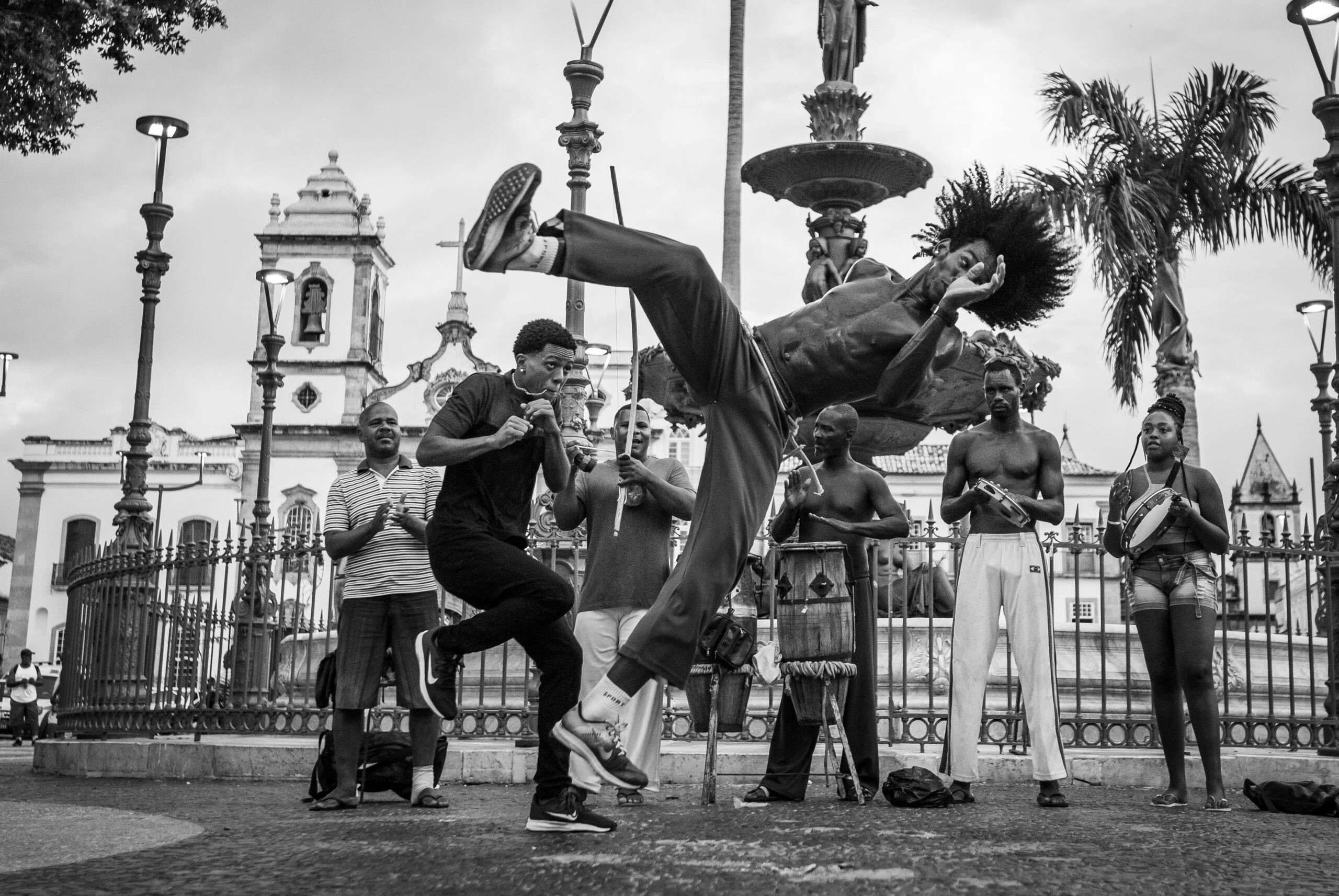Ever seen someone flip, kick, and spin in the air to the sound of a cool, twangy instrument called a **berimbau**, and thought, “What *is* that magical dance-fight?” Well, that’s **capoeira**! It’s a truly unique part of Brazilian culture that blends art, resistance, rhythm, and incredible movement. More than just a sport, capoeira is a powerful symbol of freedom and identity.
To many, it just looks like beautiful acrobatics. But behind every flowing move, there’s a deep story of struggle, survival, and a rich history. Understanding capoeira means connecting with the heart of Brazil and the African roots that shaped its vibrant culture.
So, What Exactly IS Capoeira?
Capoeira is an Afro-Brazilian cultural practice that mixes elements of fighting, dance, music, and physical expression. It first started way back in the colonial era, as a clever way for enslaved Africans in Brazil to resist.
By disguising their fight training as dance, enslaved people could practice self-defense without their enslavers suspecting anything. And just like that, capoeira was born: smart, agile, super creative, and all about liberation.
Getting into the Groove: Moves and the “Ginga”
The most basic—and maybe the most important—movement in capoeira is the **ginga**. It’s the foundation of the “game,” where your body is constantly swaying, shifting your weight from one leg to the other in sync with the music.
Besides the ginga, here are some other essential moves you’ll see:
- Armada: A spinning kick with a straight leg.
- Meia-lua de frente: A circular kick where your body leans forward.
- Aú: The famous cartwheel, used for dodging or attacking.
- Rasteira: A low sweep designed to trip your opponent.
The Soul of Capoeira: Music!
Music isn’t just background noise in capoeira; it’s the very soul of it! It sets the speed, the style of the game, and the energy of the **roda** (the circle where capoeira is played). The main instrument is the **berimbau**, usually joined by the pandeiro (tambourine), atabaque (drum), and agogô (bell).
The berimbau has different rhythms, called “toques,” which dictate how the game is played:
- Angola: Slower and more strategic.
- São Bento Grande: Faster and more acrobatic.
- Regional: A middle-ground pace, more fluid.
The songs (cantigas) tell stories, give commands, and share wisdom. Every capoeira player learns to sing and play instruments, because the music is just as important as the kicks and dodges.
Two Flavors of Capoeira: Angola and Regional
There are two main styles of capoeira you’ll often hear about:
- Capoeira Angola: This is the more traditional style, with slower, lower movements that are full of cunning and trickery (“malandragem”). It keeps a strong connection to its African roots and emphasizes strategic play.
- Capoeira Regional: Created by Mestre Bimba, this style is faster and focuses more on the effectiveness of the movements, with a more athletic structure.
These days, many groups combine elements from both styles, honoring tradition while embracing a more modern approach to the art.
The Sacred Circle: The Capoeira Roda
The **roda** (pronounced HO-dah) is the sacred space of capoeira. It’s where all the magic happens: the game, the music, the singing, and the intense eye contact. Capoeiristas stand in a circle, singing and clapping, while two players enter the center to “play.”
In the roda, there aren’t really winners or losers. The focus isn’t about “fighting,” but about having a conversation with your body, showing off your skill, creativity, and respect for the other person.
Capoeira: A Tool for Big Change
In many communities, capoeira is an incredibly powerful tool for social inclusion, education, and building self-esteem. Social projects use this art form to teach discipline, history, and values to kids and young people who might be in vulnerable situations.
What’s even cooler is that it’s practiced all over the world and is recognized by **UNESCO as an Intangible Cultural Heritage of Humanity**.
Want to Try Capoeira? Here’s How to Start!
If you’re feeling inspired and want to give capoeira a try, here are a few tips:
- Look for a good school or group with experienced teachers.
- Wear light, comfy clothes, usually white.
- Always show respect for the masters and the art’s history.
- Be patient! Capoeira needs practice and dedication, but it’ll reward you with joy and a deeper understanding of yourself.
Conclusion
Capoeira is more than just a fight, more than just a dance. It’s a whole universe that mixes body, sound, soul, and history. By understanding it, you don’t just discover a new art form; you also dive deep into the roots of Brazilian culture and connect with a powerful legacy of struggle and freedom.
Whether you want to practice it or just enjoy watching it, opening your heart to capoeira means making space for something truly unique, ancient, and deeply Brazilian. **Axé!** 🥁

